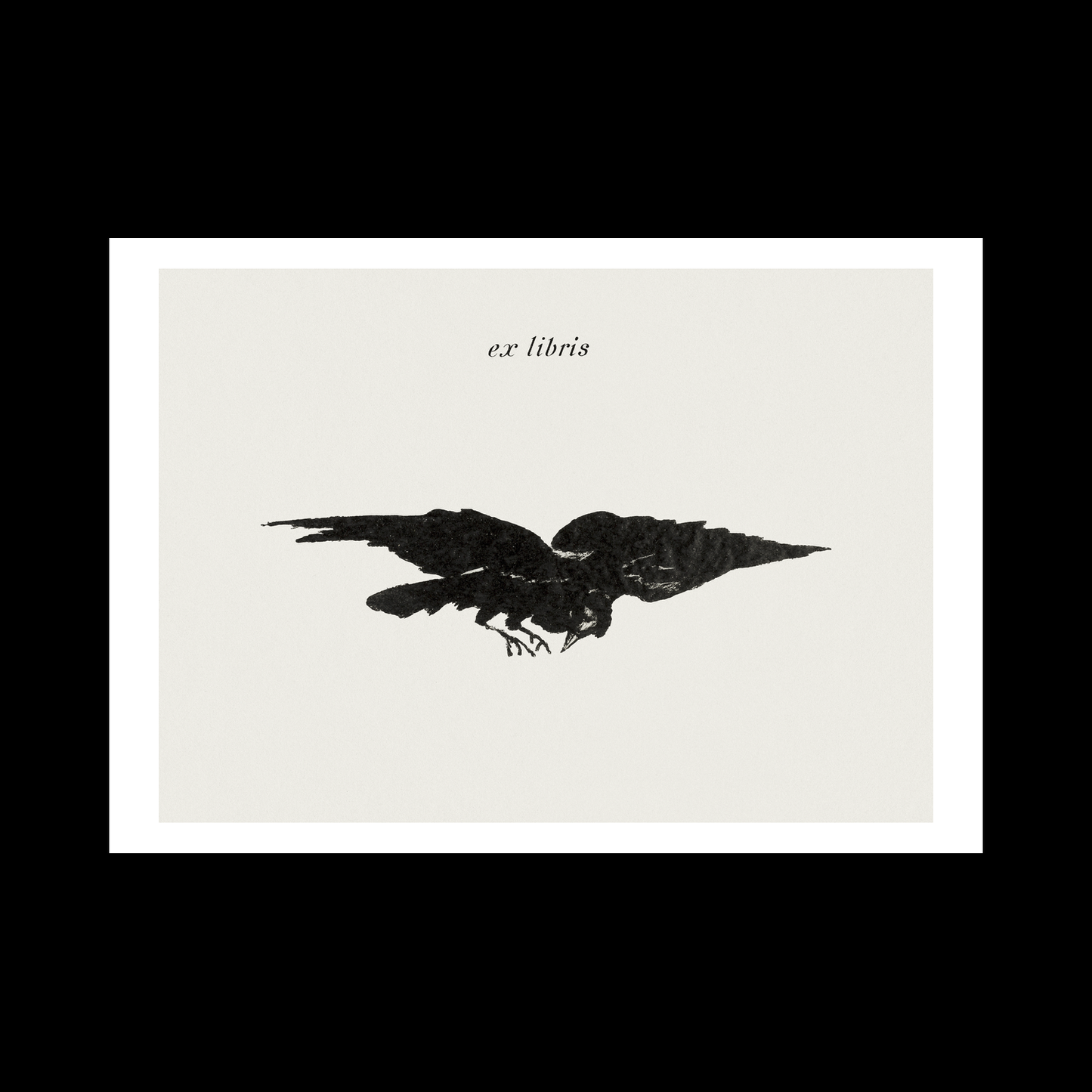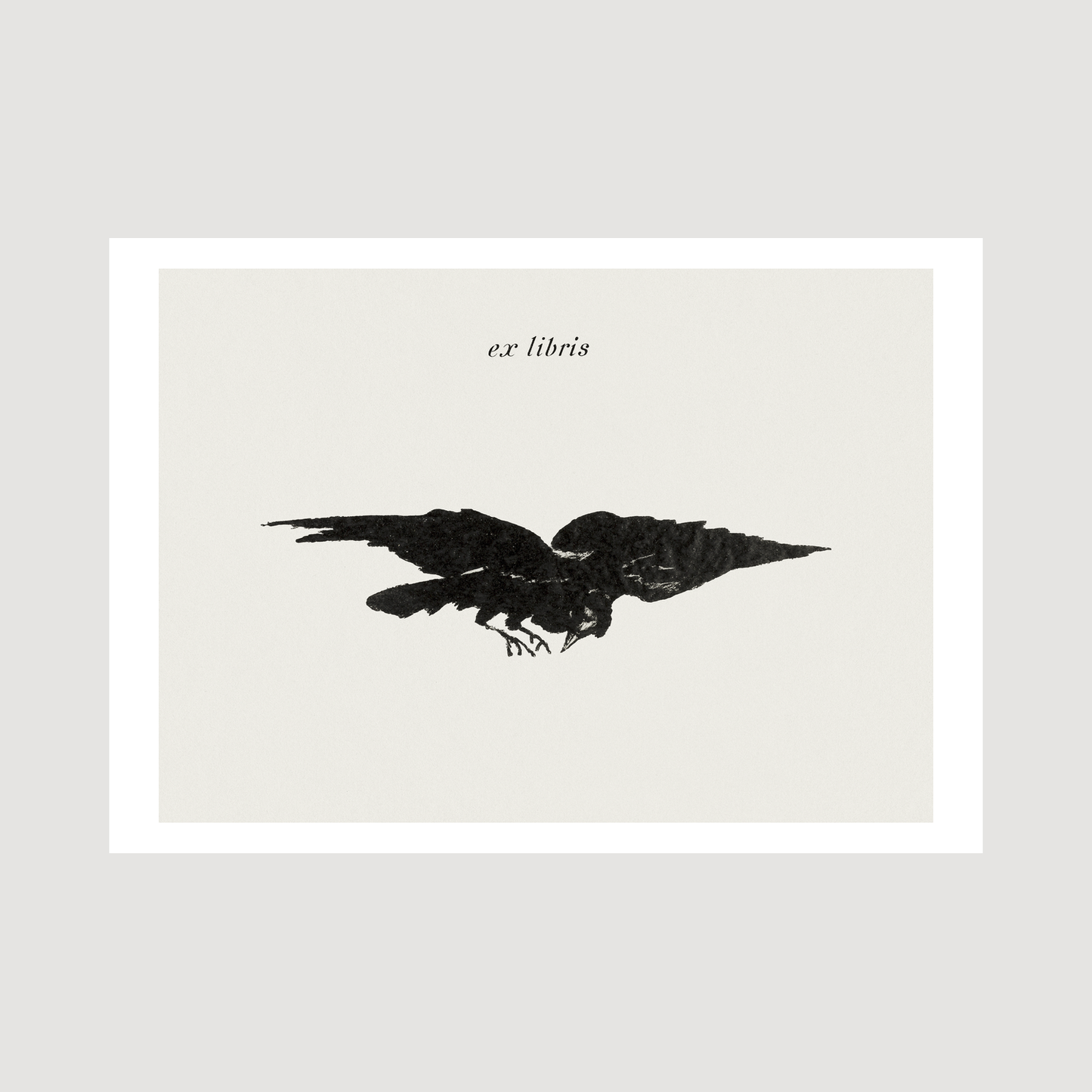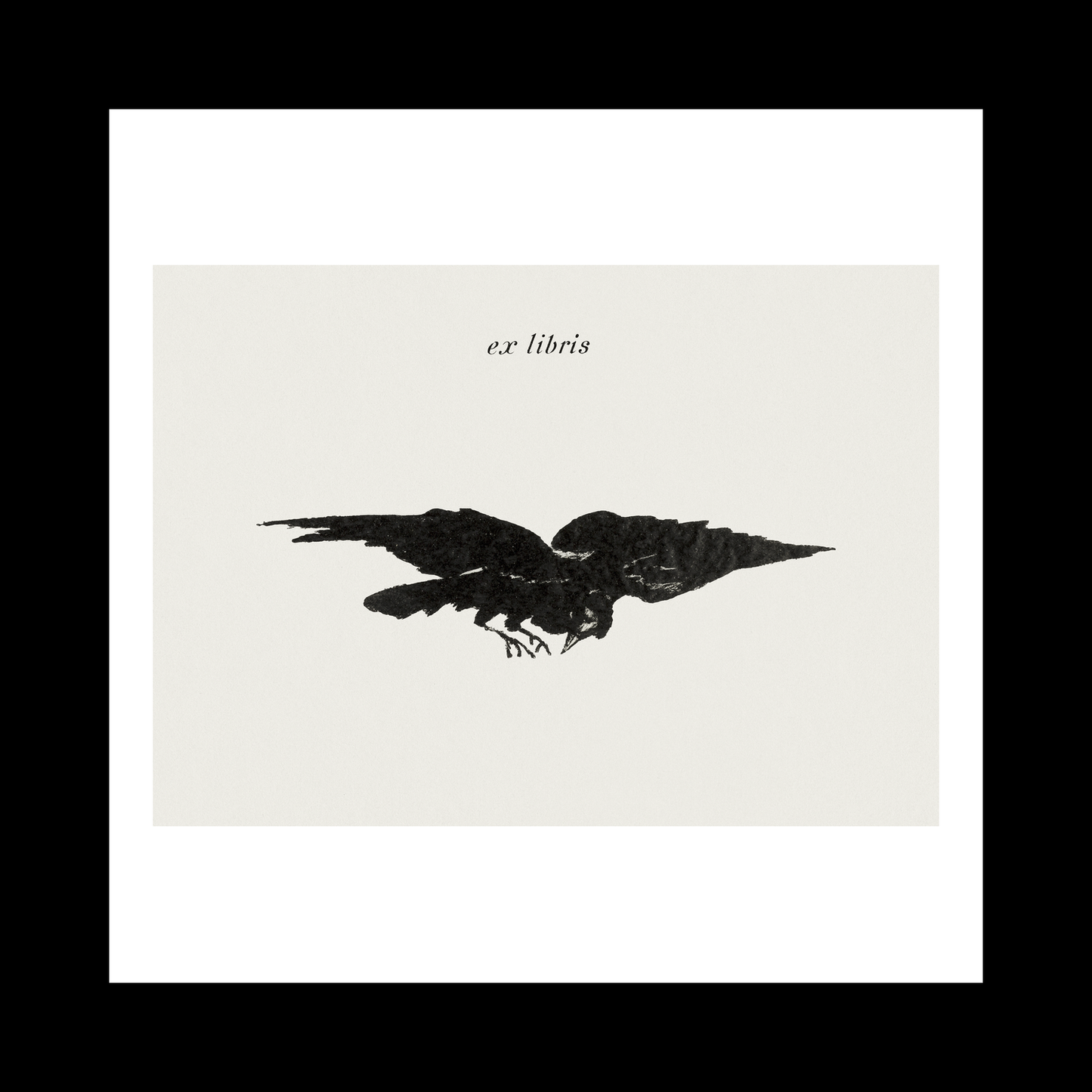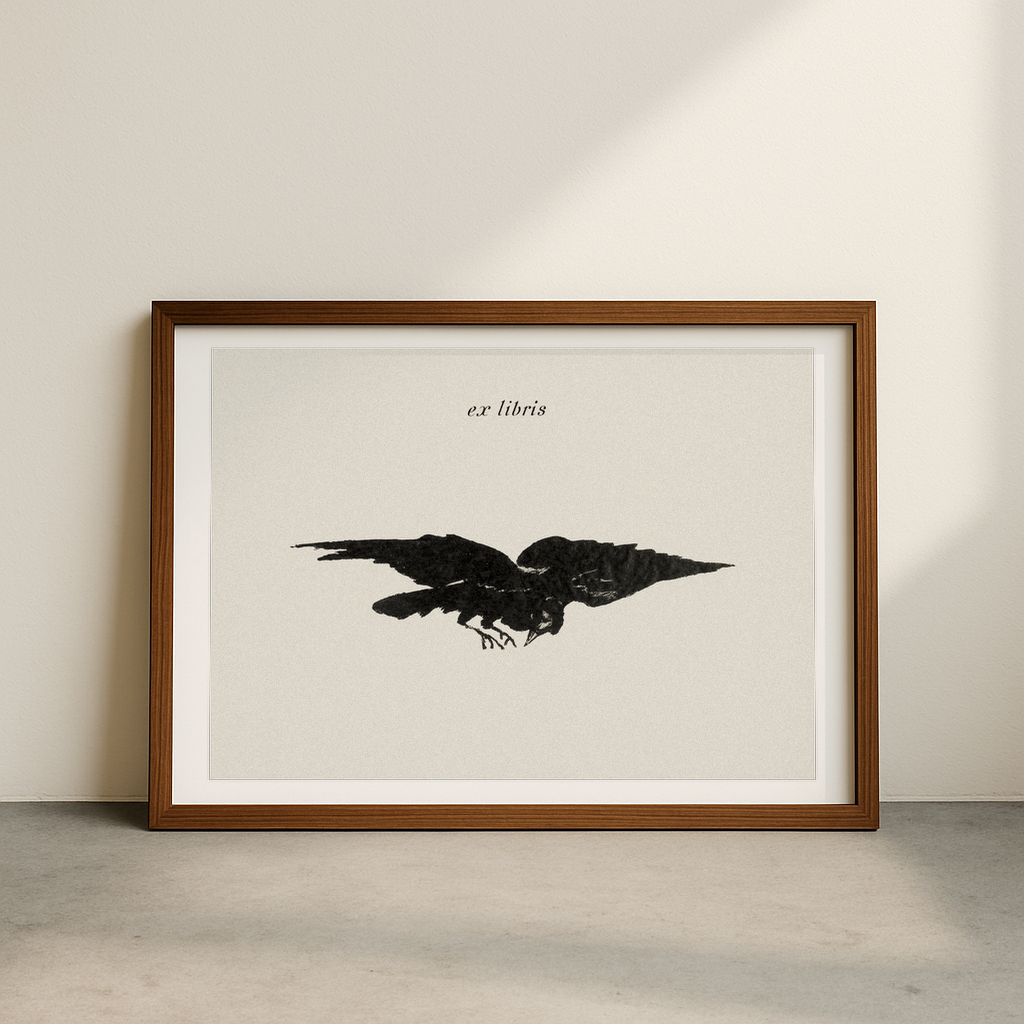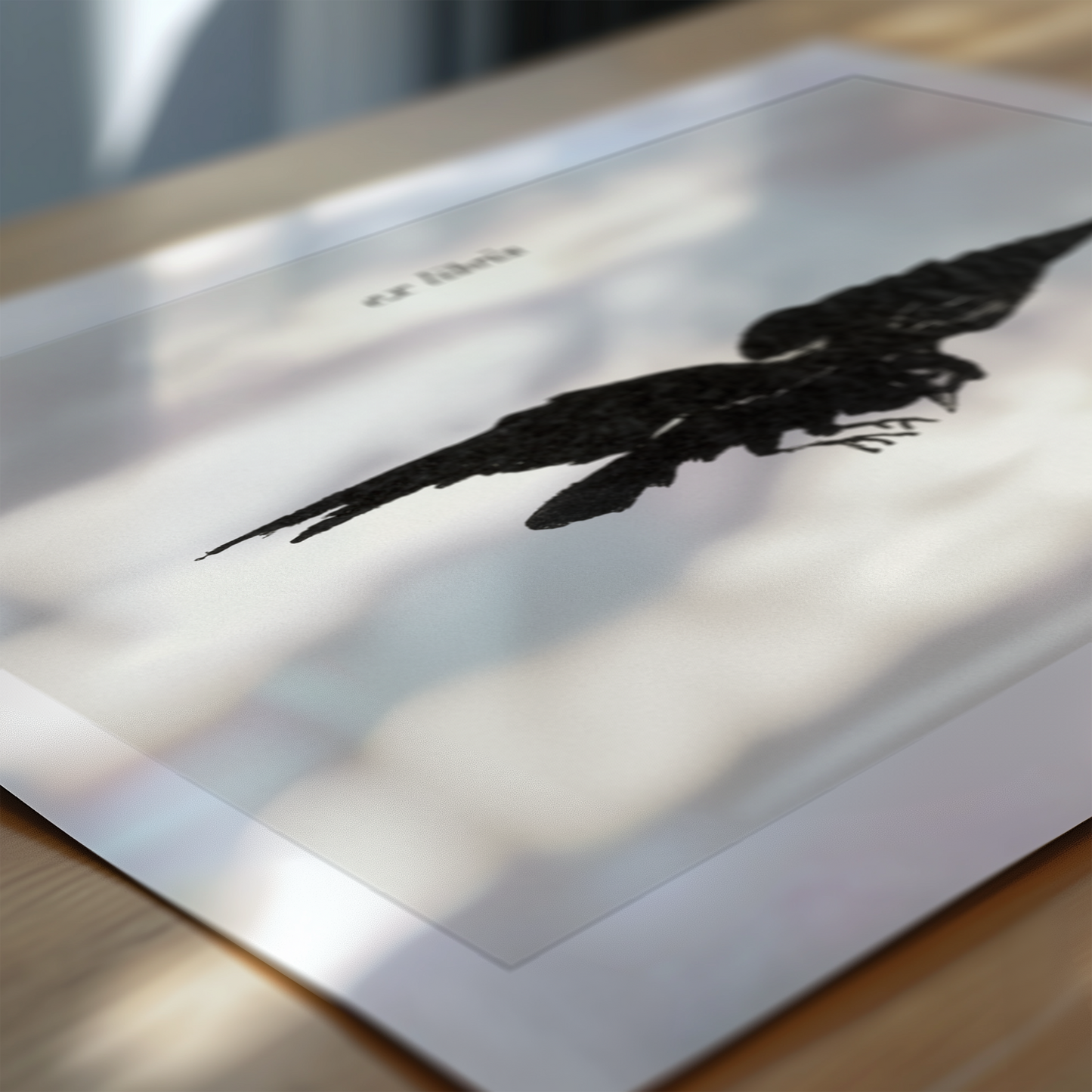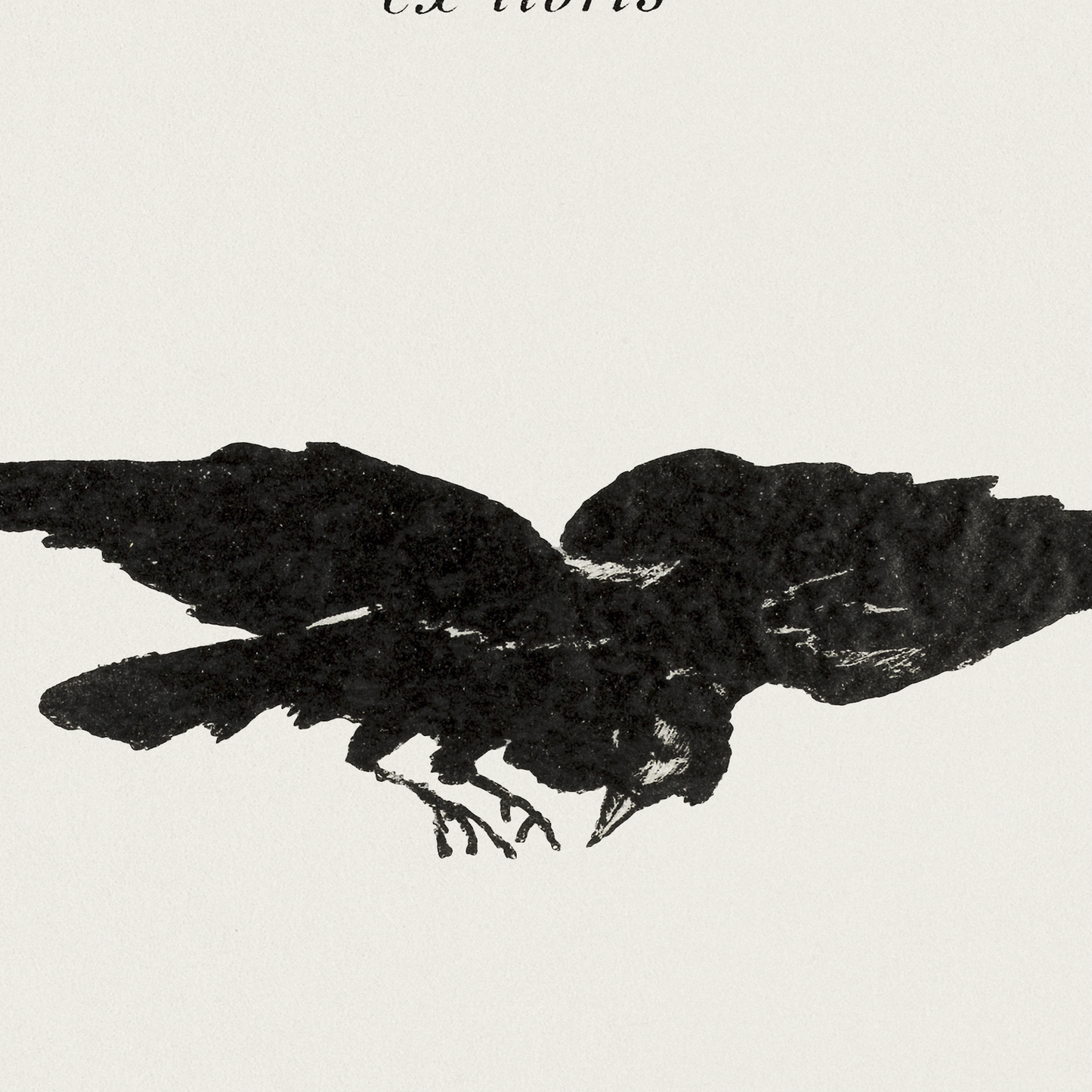1
/
of
6
The Raven (Le Corbeau), (1875)
The Raven (Le Corbeau), (1875)
Regular price
£12.45 GBP
Regular price
Sale price
£12.45 GBP
Taxes included.
Quantity
Couldn't load pickup availability
Édouard Manet's 'Flying Raven' (1875) is a striking ex libris print that captures the essence of Edgar Allan Poe's haunting poem "The Raven." The piece showcases Manet's masterful command of lithography, depicting a raven mid-flight against a stark background. The bird's form is rendered with bold, confident strokes, its wings spread dramatically across the composition, creating a powerful sense of movement and otherworldly presence.
This illustration was part of Manet's broader project to illustrate Stéphane Mallarmé's French translation of Poe's poem. The collaboration between Manet and Mallarmé marked a significant moment in the intersection of French and American literary arts. Manet created this piece during a period when French artists were increasingly fascinated by Poe's works, contributing to a broader cultural exchange between Paris and America.
The artistic choice to capture the raven in flight, rather than perched "upon a bust of Pallas" as described in the poem, reveals Manet's interpretative approach to literary illustration. His technique demonstrates the influence of Japanese woodblock prints, evident in the economical use of line and space. The print's composition balances dramatic impact with subtle detail, showcasing Manet's ability to convey psychological tension through seemingly simple imagery. This work represents a crucial moment in the evolution of book illustration, where fine art and literary interpretation merged to create something entirely new.
The piece holds particular significance as it bridges the gap between Romantic literature and Impressionist visual arts, two movements that profoundly shaped 19th-century European culture. Through this illustration, Manet not only paid homage to Poe's literary genius but also demonstrated how visual art could enhance and reinterpret written works, creating a dialogue between different artistic mediums.
View full details
This illustration was part of Manet's broader project to illustrate Stéphane Mallarmé's French translation of Poe's poem. The collaboration between Manet and Mallarmé marked a significant moment in the intersection of French and American literary arts. Manet created this piece during a period when French artists were increasingly fascinated by Poe's works, contributing to a broader cultural exchange between Paris and America.
The artistic choice to capture the raven in flight, rather than perched "upon a bust of Pallas" as described in the poem, reveals Manet's interpretative approach to literary illustration. His technique demonstrates the influence of Japanese woodblock prints, evident in the economical use of line and space. The print's composition balances dramatic impact with subtle detail, showcasing Manet's ability to convey psychological tension through seemingly simple imagery. This work represents a crucial moment in the evolution of book illustration, where fine art and literary interpretation merged to create something entirely new.
The piece holds particular significance as it bridges the gap between Romantic literature and Impressionist visual arts, two movements that profoundly shaped 19th-century European culture. Through this illustration, Manet not only paid homage to Poe's literary genius but also demonstrated how visual art could enhance and reinterpret written works, creating a dialogue between different artistic mediums.
